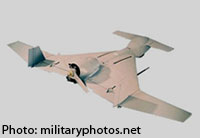INDIAN ARMED FORCES CHIEFS ON
OUR RELENTLESS AND FOCUSED PUBLISHING EFFORTS

SP Guide Publications puts forth a well compiled articulation of issues, pursuits and accomplishments of the Indian Army, over the years

I am confident that SP Guide Publications would continue to inform, inspire and influence.

My compliments to SP Guide Publications for informative and credible reportage on contemporary aerospace issues over the past six decades.
Indian Air Force All Set to Acquire Unmanned Combat Air Vehicles
An unauthenticated source suggests that the Indian Air Force (IAF) may have already placed an order worth $100 million with the Israeli firm IAI (Israeli Aerospace Industries) for up to 10 ‘Harop’ UCAV (Unmanned Combat Air Vehicle) systems, developed by its Malat (UAV) Division. The Harop is a bigger and more advanced version of the IAI’s ‘Harpy’ anti-radiation drone which was inducted into the IAF more than a decade ago. Like the Harpy, the Harop UCAV can be launched from ground/sea-based canisters but in addition, it can also be adapted for air launch. Unlike the fully autonomous Harpy, however, the Harop can also be controlled in flight by a remote operator. The system features two guidance modes: it can either home in on radio emissions by itself with its anti-radar homing sensor (on similar lines as the Harpy) or, the operator can select static or moving targets by the vehicle’s electro-optical sensor. This latter mode not only allows the Harop to attack even those enemy radars which have been shut down as a SEAD (Suppression of Enemy Air Defence) weapon but, also, to engage any other enemy static or moving target in the offensive strike role.

The 2.5 m (8.2 ft)-long drone is powered by a heavy-fuel engine that drives a pusher propeller. The vehicle has foldable wings which unfold after launch from a canister and provide a wing span of 3 m (9 ft 10 in). The vehicle has a total endurance of six hours and a range up to 1,000 km. It is equipped with a built-in 23 kg warhead. This hunter-killer is designed to loiter in the area of interest and attack targets by self-destructing into them.
The Harop will provide IAF the capability to carry out precision attacks against any target deep inside enemy territory without having to send its manned fighters to hit ground targets. Needless to say, the weapon also has great potential against high-value terror targets which could be engaged without inviting international criticism.





